Lesson plan
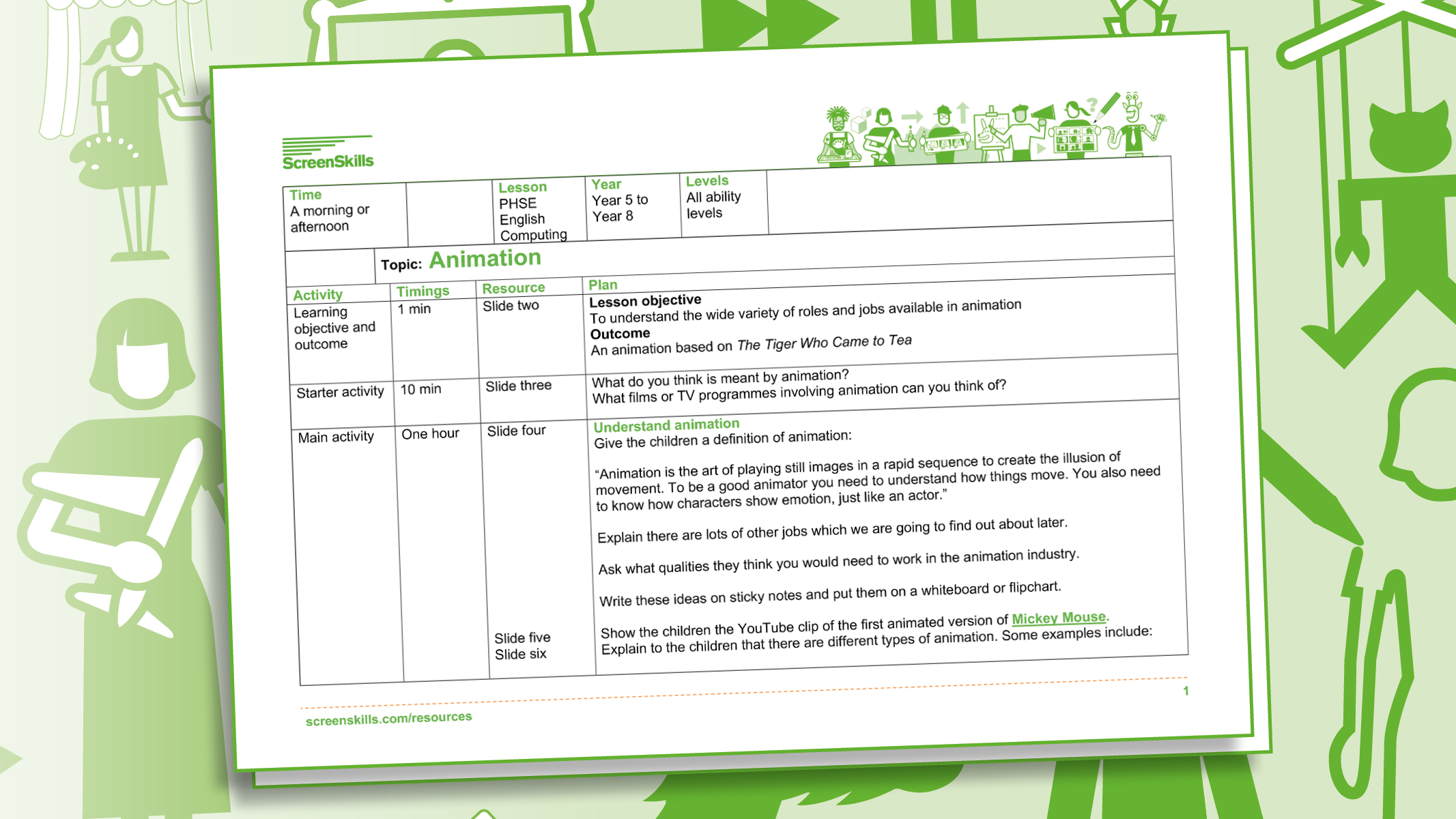
This is a detailed plan of the lesson that can be taught in three hours or as a six-week project, depending on the ambition of the animation being produced. It's designed to be used with the lesson slides and the project book. The lesson can also be extended with maths and science activities.
Download Animation lesson plan (Word).
This plan has been designed for you to use as a flexible tool. It was written so that you could teach the lessons over a period of a term (approximately six lessons) or a morning or afternoon.
How long the learning takes depends on how the animation is produced. If you have the hardware and the skills, the lesson could be a six-week project using free software, such as Blender. Or it could be done over a week with iPads, Plasticine and a stop-motion software such as 2Animate or Stop Motion Studio. Alternatively, the animation could be a flipbook produced in the course of an afternoon.
It's also written to allow different groups within a class to create different versions of animations if you wish.
An introductory activity to the lesson could be for the children to explore a variety of materials they could make a story with, such as Lego, toys, clay or junk. A rotation activity could be set up whereby the children go from one task to another and move the story on by using the resources. Each group would need to take photos of the story they were telling and the teacher would then start to make the links for the children between this and animation.
A suggestion is that there are five or six children in a group. This is to allow each person to have a specific role within the group, although you may wish to allocate more than one person to each role. You may also allow the children to allocate roles for themselves.
If you have limited time, you may wish to give the children a created storyboard and allocate groups particular scenes of the story to create as an animation.
If you have more time, you could allow this project to run over a six-week term. One idea would be to increase the length of the story and use more sophisticated media to complete the project. You may wish to use the tasks as weekly activities, completing one task per week.
You might also want to do the maths and science extension activities outlined below.
Lesson slides
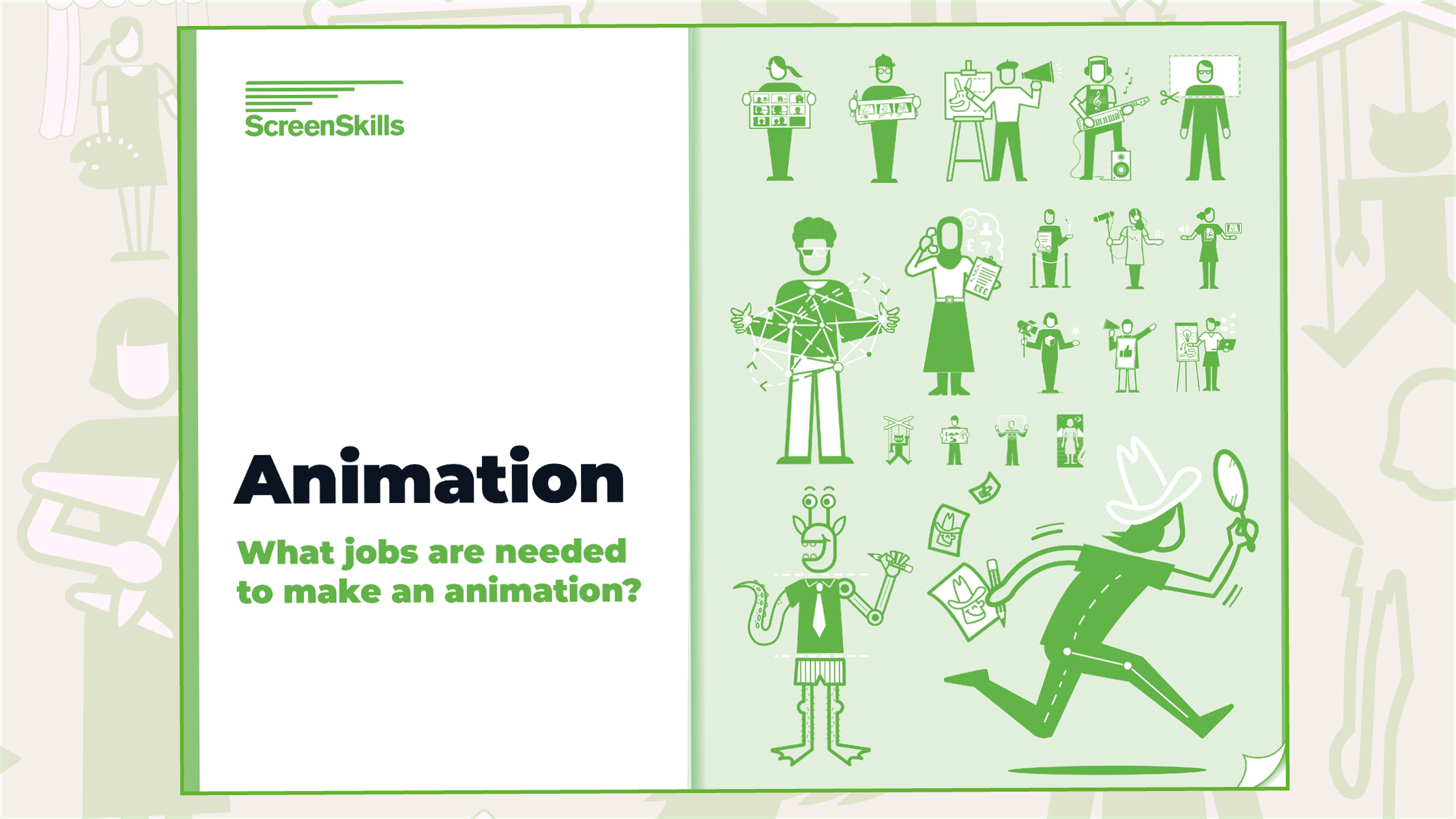
These slides, in the form of a PDF, are designed to be used in the main lesson activity and for the evaluation and plenary. You'll need an internet connection to play the videos, which are hosted on YouTube and which will play from your browser. For best results view the slides full screen.
Download Animation lesson slides (PDF).
Careers in the animation industry
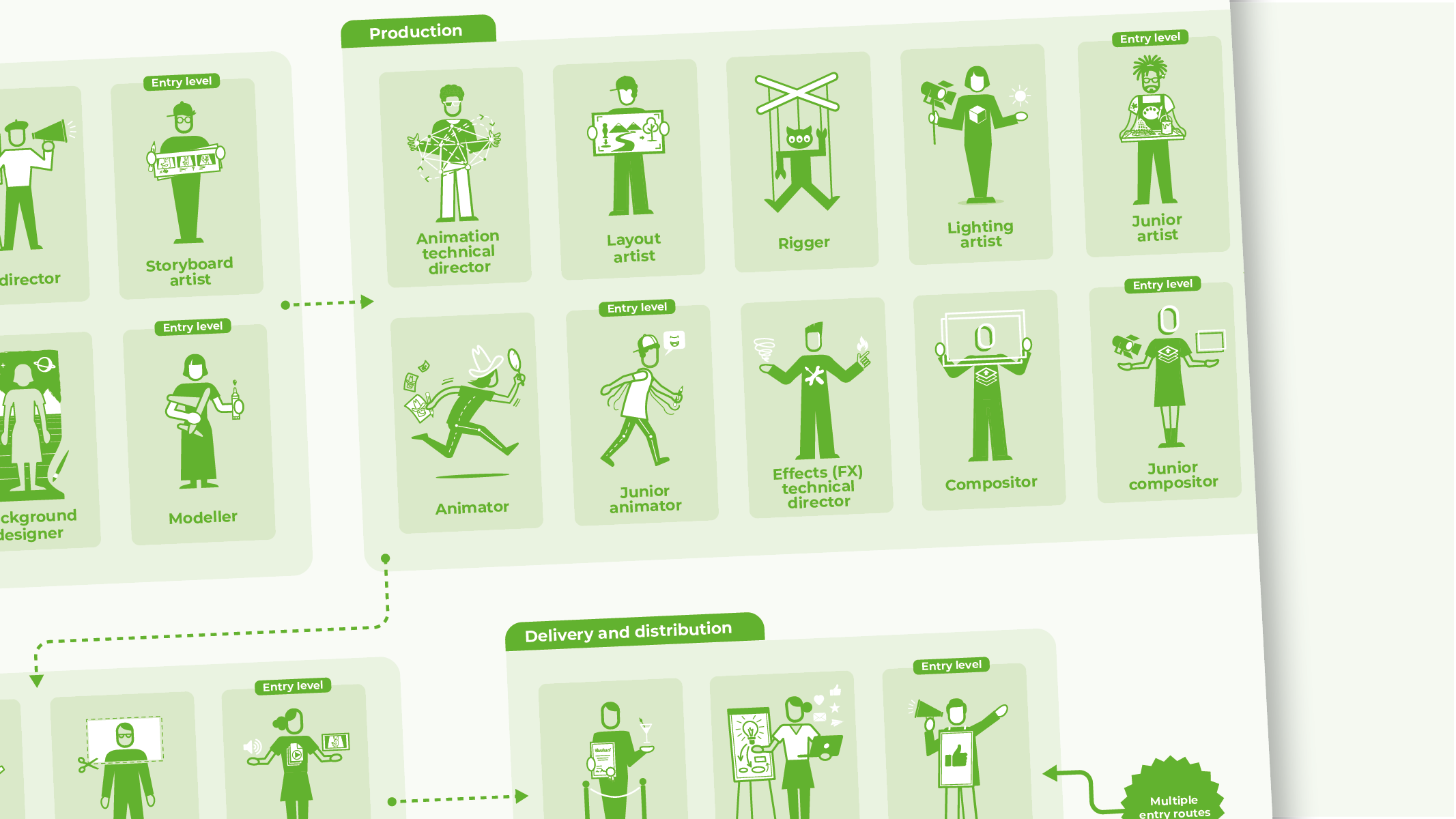
You might want to use our animation career map when explaining different roles to the children. You can download the PDF of this map and print it on A3 paper. Alternatively, you can scroll through the different roles on our website: animation job profiles.
Download Careers in the animation industry (PDF).
Project book
If you are doing the lesson as part of a project, you might want to give each child a project book in which they can keep a record of their work. Click on the images above and scroll through to see the pages of the project book. To print the project book, download the PDF below. Print onto six sides of A3 paper to make a 12-page A4 project book.
Download Animation project book (PDF).
Maths extension activity
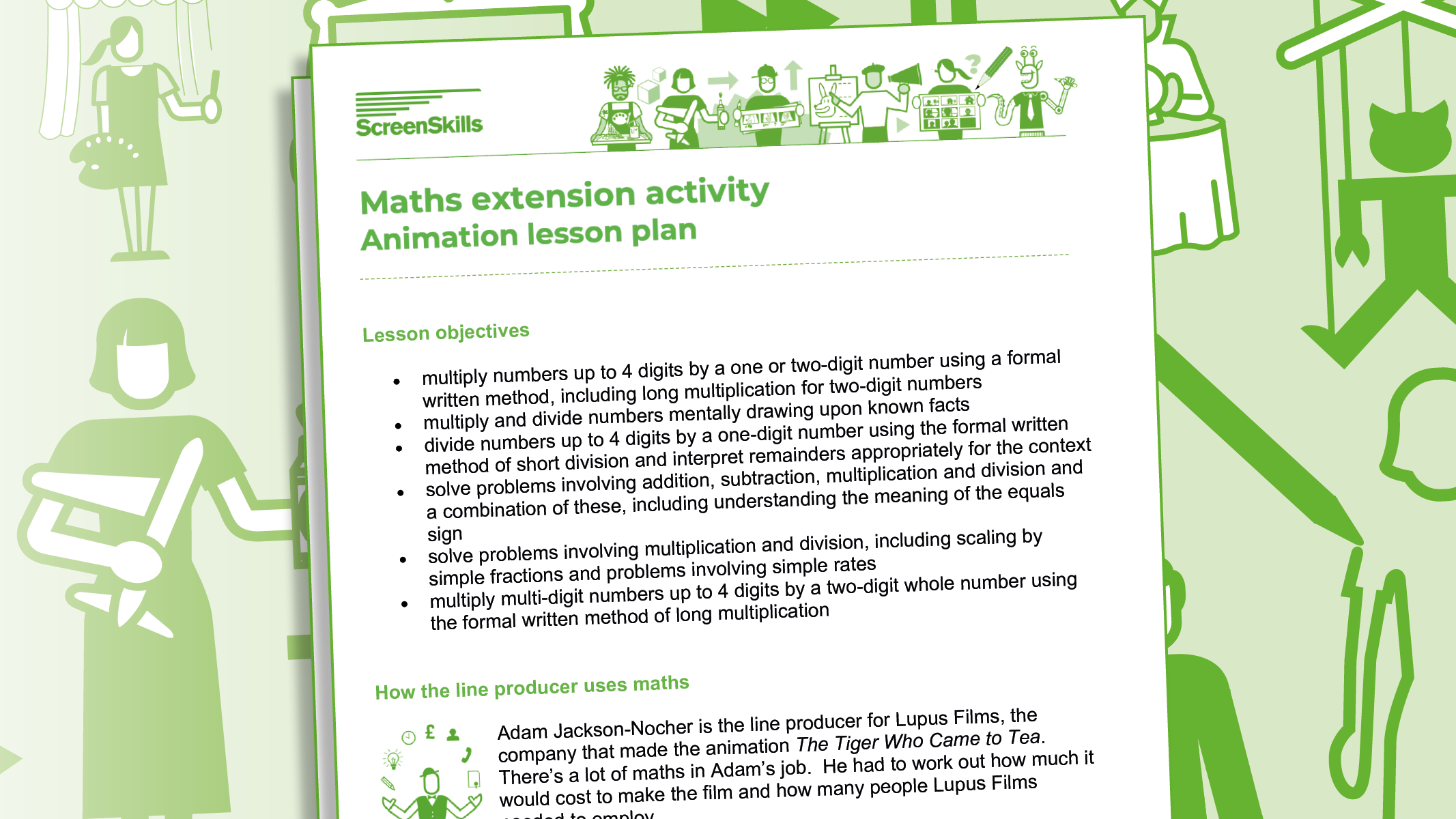
The maths extension activity meets Key Stage 2 learning objectives and can be taught in an hour. It's based on the maths done by Adam, when he was producing The Tiger Who Came to Tea. How many artists made The Tiger Who Came to Tea and how many cups of tea did they drink?
Download Maths extension activity (Word).
Science extension activity
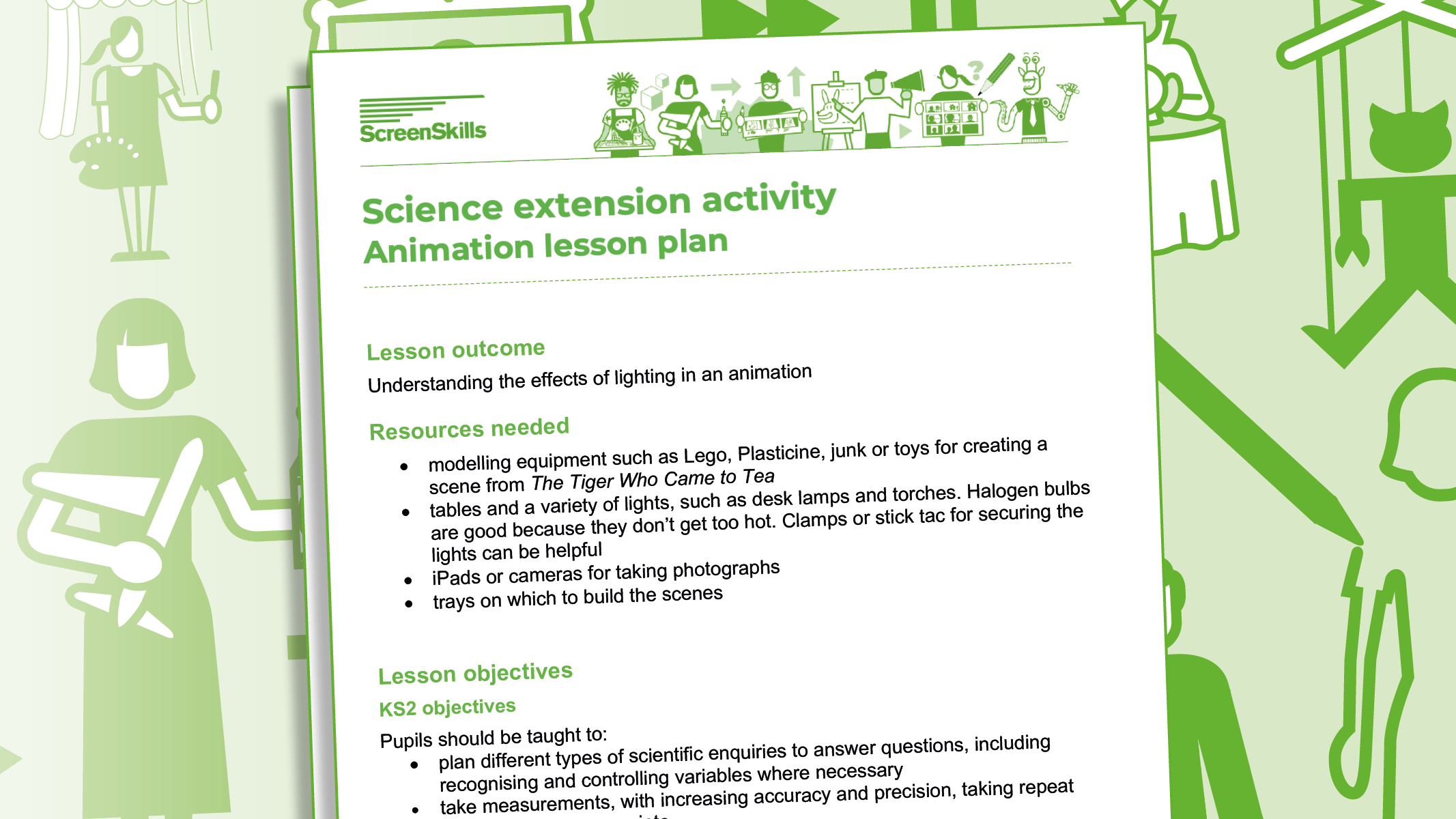
The science extension activity is about the effects of light in animation. It delivers learning objectives from Key Stage 2 and Key Stage 3. This activity is particularly relevant to children who will make or have made a stop-motion animation. It also informs an understanding of computer-generated animation.
Download Science extension activity (Word).
Produced by ScreenSkills with support from the Animation Skills Council and supported using public funding by Arts Council England
With special thanks to Lupus Films, HarperCollins Children's Books, Universal Pictures, Channel 4 Television and Jane Hutchison
Thanks also to Into Film and Chocolate Films
All media from The Tiger Who Came to Tea is used with kind permission of Tiger Tea Productions Ltd
Design by Dave Gray (I am Dave Gray)
Icons based on an original concept by Ian Murphy and Allan Burrell (Compositing Coach)





